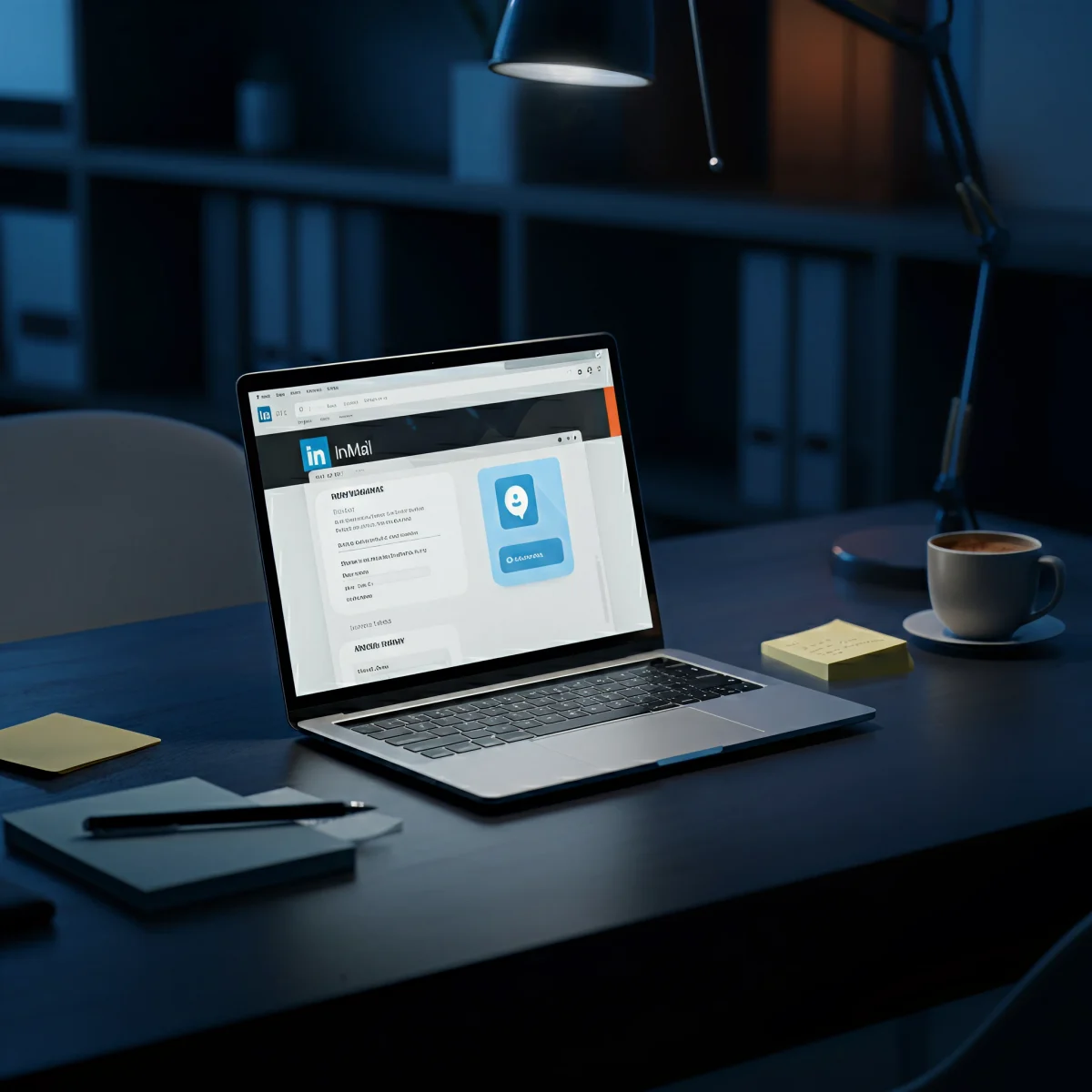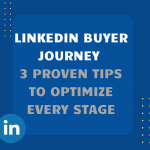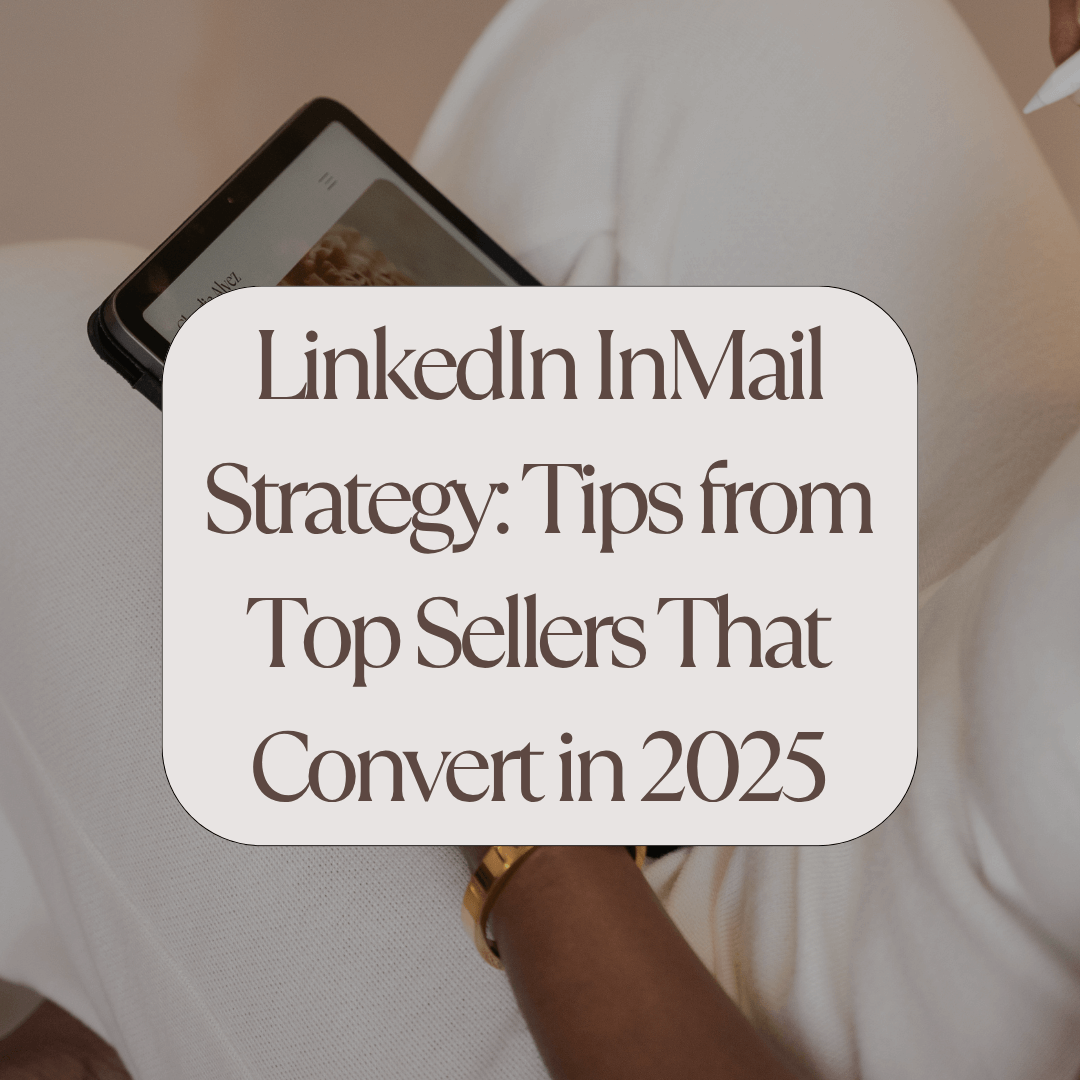
LinkedIn InMail Strategy That Actually Converts Tips from Top Sellers
LinkedIn InMail is a game-changer for sales professionals. It allows direct communication with potential leads. But how do you make it work effectively?
Crafting a LinkedIn InMail strategy that converts is crucial. It requires a blend of personalization, timing, and clear messaging.
Top sellers know the secrets to success. They use LinkedIn InMail to build relationships and drive sales.
Personalization is key. Tailoring each message to the recipient’s profile can significantly boost response rates.
A compelling subject line is your first impression. It can make or break your open rates.
Concise, value-driven messages are essential. They respect the recipient’s time and deliver clear value.
Timing also plays a role. Sending InMails during business hours can increase your chances of a response.
This guide will explore these strategies and more, helping you master LinkedIn InMail for sales success.
What Is LinkedIn InMail and Why Does It Matter?
LinkedIn InMail allows you to message anyone on LinkedIn, not just your connections. This feature opens doors that might otherwise remain closed. It’s a way to reach decision-makers directly.
InMail matters because it breaks through traditional barriers. Unlike email, which can often feel like a shot in the dark, InMail targets specific professionals. Your messages land right in the recipient’s inbox, making it personal and immediate.
There are several benefits of LinkedIn InMail:
- Direct Access: Contact industry leaders or potential clients with ease.
- Higher Visibility: Messages stand out because they are not buried under other emails.
- Response Rates: Typically higher than cold emails due to LinkedIn’s professional context.
These factors make LinkedIn InMail a critical tool for anyone aiming to engage prospects and convert them into clients effectively.
The Anatomy of a High-Converting LinkedIn InMail
Crafting a high-converting LinkedIn InMail begins with understanding its structure. Every component must work harmoniously to catch and hold the recipient’s attention. Each element, from the subject line to the closing, plays a role in achieving this goal.
A compelling subject line is your first touchpoint. It should intrigue without misleading, enticing the reader to click. Once they open the message, the greeting needs to feel personal and genuine. Address the recipient by name, showing that you’ve invested time in understanding who they are.
The body of your message should be concise yet rich in value. Here, focus on the recipient’s needs and highlight how you can assist. Use simple language that communicates your value proposition clearly and authentically.
Finally, end with a strong call-to-action that guides their next step. A successful InMail typically includes:
- Attention-grabbing Subject Line: Intriguing and honest.
- Personalized Greeting: Show familiarity with the recipient.
- Value-driven Body: Concise, relevant, and focused on benefits.
- Clear Call-to-Action: Direct and compelling suggestion for the next step.
This blueprint can greatly increase your chances of conversion.
Crafting the Perfect Subject Line
The subject line is the first impression of your LinkedIn InMail. A compelling subject line boosts open rates dramatically. It’s essential to strike a balance between intrigue and clarity. A vague subject line might be ignored or seen as spam. An overly detailed one can seem unappealing.
Think about what would catch your eye if you were the recipient. Personalization is key, so if possible, mention the recipient’s name or company. This small touch can significantly increase your message’s appeal.
Offer a hint of value or a question that the recipient might find interesting. This prompts them to explore further. Consider these tips for crafting your subject line:
- Be concise: Keep it short, ideally under 10 words.
- Use personalization: Include names or company details.
- Create curiosity: Pose a question or hint at value.
Creating the perfect subject line can significantly impact the success of your InMail strategy.
Personalization: The Secret Sauce for LinkedIn Outreach
Personalization transforms a generic message into a meaningful conversation. Without it, your LinkedIn InMail risks being overlooked. By customizing your approach, you immediately set yourself apart.
Use details from the recipient’s profile to tailor your message. Referencing their recent achievements, articles they’ve published, or interests can establish common ground. This demonstrates that you’re not just sending a bulk message.
Personalization shows respect for the recipient’s time and position. It also reflects your genuine interest in them or their organization. When done correctly, it increases the likelihood of a positive response.
Consider incorporating these personalization tactics:
- Mention shared connections: Highlight mutual contacts.
- Reference recent activity: Discuss their latest post or achievement.
- Align with their interests: Connect over common interests.
Personalization is truly the secret sauce in LinkedIn outreach. It converts a standard interaction into an engaging and valued conversation. With thoughtful customization, you can significantly enhance your chances of successful engagement.
Writing Concise, Value-Driven Messages
In the world of LinkedIn InMail, brevity is crucial. Long, winding messages often lead to disinterest. Instead, focus on being concise and clear.
Your message should not only be brief but also rich in value. Offer insights, solutions, or opportunities that resonate with the recipient. This approach communicates your understanding of their needs and positions you as someone offering relevant help.
Crafting value-driven messages involves strategic clarity. Ensure your intent is evident right from the start. Let the recipient see what’s in it for them and why they should engage.
Here are some tips for writing impactful messages:
- Start with purpose: Define your intent quickly.
- Highlight benefits: Specify how you add value.
- Use clear language: Avoid jargon and complex terms.
By staying concise and focused on value, you increase your chances of a favorable response. Delivering your message efficiently respects the recipient’s time while conveying your point effectively.
Building Rapport: Leveraging Mutual Connections and Shared Interests
Building rapport is a vital step in the LinkedIn InMail strategy. Establishing a connection based on mutual interests or shared networks can elevate your outreach efforts. This approach humanizes your message and makes it more relatable to the recipient.
Start by identifying any mutual connections you have with the recipient. Mentioning these shared links can create a foundation of trust and familiarity. Additionally, take time to explore their LinkedIn activity for common interests or industries to discuss.
Once you’ve identified these mutual factors, weave them naturally into your message. This inclusion can serve as an icebreaker and provide a segue into the core purpose of your message. Here’s how to effectively leverage these elements:
- Mention mutual contacts: Highlight shared connections to build trust.
- Discuss common interests: Bring up relevant topics or industries.
- Acknowledge shared groups: Reference any shared LinkedIn groups or communities.
By focusing on areas of commonality, you demonstrate genuine interest in the recipient, paving the way for meaningful interactions and potential collaboration.
The Power of a Clear Call-to-Action
A clear call-to-action (CTA) is a crucial part of any LinkedIn InMail strategy. It guides the recipient on what to do next, increasing the chances of a response. Without a strong CTA, your message may lack direction and urgency.
Crafting an effective CTA involves being specific and action-oriented. For instance, instead of a vague “let’s connect,” try “schedule a call to discuss your needs next week.” This approach provides clarity and prompts immediate action from the recipient.
Consider the following elements when creating a powerful CTA:
- Be specific: Clearly state the action you want.
- Use action verbs: Encourage immediate engagement.
- Create urgency: Offer time-sensitive options or benefits.
By incorporating a well-defined CTA, you streamline your message’s intent, encouraging your recipient to take the next step in your outreach process.
Timing and Frequency: When and How Often to Send InMails
Timing plays a crucial role in how well your LinkedIn InMails are received. Sending messages during business hours often yields better results. Recipients are more likely to engage when they are in work mode, rather than outside office hours.
Beyond timing, the frequency of your InMails also matters. Sending too many messages can lead to diminishing returns or even turn prospects off. Balance is key to maintaining interest without overwhelming your leads.
Here are some tips for optimizing your timing and frequency:
- Send during business hours: Increase the likelihood of immediate engagement.
- Avoid weekends: Business contacts may be less responsive.
- Limit follow-ups: Space them out to avoid seeming intrusive.
Understanding when and how often to send LinkedIn InMails will help you optimize your outreach efforts and enhance your communication strategy.
Following Up Without Being Pushy
Following up on LinkedIn InMails requires a balance between being persistent and being respectful. A well-timed follow-up can reignite interest, but overdoing it can make you seem pushy. It’s essential to approach this carefully to maintain a positive interaction with your prospects.
Here are some strategies for effective follow-ups:
- Allow time: Wait at least a week before following up.
- Be polite: Acknowledge the recipient’s time constraints.
- Add value: Share new information or insights relevant to their needs.
By implementing these strategies, you can follow up effectively without risking your relationship with potential leads. Remember, patience often yields better results in the long run.
Using LinkedIn Analytics and A/B Testing to Optimize Your Strategy
Leveraging LinkedIn’s analytics is crucial for refining your InMail strategy. It provides insights into how your messages are performing. You’ll want to track metrics like open rates and response rates to gauge effectiveness.
A/B testing is another powerful tool at your disposal. By testing different elements of your InMails, you can identify what resonates best. Try varying subject lines, message length, or tone. This helps pinpoint what draws positive responses from prospects.
Consider the following steps to enhance your strategy:
- Analyze results: Regularly assess your InMail performance metrics.
- Test variables: Alter one element at a time for clear insights.
- Iterate: Continuously refine your approach based on data.
In summary, using analytics and A/B testing is essential for a data-driven and effective LinkedIn InMail strategy. It allows you to adapt and improve continuously.
Common Mistakes to Avoid in Your LinkedIn InMail Strategy
Navigating the world of LinkedIn InMail can be tricky. Many make common errors that hinder success. To avoid setbacks, understanding these mistakes is key.
First, over-personalization can backfire. While tailoring is crucial, avoid making assumptions about recipients. Stick to verifiable facts to establish authenticity.
Here are prevalent mistakes to steer clear of:
- Generic messages: These lack impact and feel impersonal.
- Overly aggressive sales tone: Can turn off potential leads.
- Ignoring profile clues: Misses opportunities for meaningful engagement.
Lastly, remember to keep follow-ups respectful. Too many messages can overwhelm and alienate recipients. Balance persistence with patience. Avoiding these pitfalls enhances the effectiveness of your LinkedIn InMail strategy.
Integrating InMail with a Multi-Channel Outreach Strategy
LinkedIn InMail thrives within a broader outreach strategy. Complementing InMail with various channels boosts reach and engagement. Use diverse modes of communication to connect with prospects where they are.
Creating a cohesive strategy involves several components. Coordinate your efforts across multiple platforms to maximize impact. Here’s how you can integrate effectively:
- Email: Pair with InMail for continuity.
- Social Media: Engage on relevant platforms.
- Phone Calls: Follow up with voice interactions.
A multi-channel approach ensures your message reaches prospects even if one method falls short. By diversifying outreach, you meet potential clients on their terms, increasing your chances of success.
Learning from Top Sellers: Real-World Examples and Templates
Top sellers use proven strategies to excel with LinkedIn InMail. These strategies can inspire anyone looking to improve their outreach. By studying successful professionals, you gain a practical sense of what works.
Analyzing real-world examples helps you understand different approaches. Top sellers often use creative templates to engage their targets. Exploring their methods offers valuable insights for crafting your own messages.
Here are a few templates and techniques commonly used by top sellers:
- Introduction: Start with a friendly and relevant opening.
- Value Proposition: Clearly state how you can help solve a problem.
- Call-to-Action: Guide the recipient towards a specific next step.
Adapting these templates to fit your style can elevate your InMail game. Learn from the best and incorporate their successful habits into your strategy. By doing so, you stand a better chance of achieving impressive results on LinkedIn.
Final Tips: Staying Authentic, Respectful, and Consistent
Authenticity in your LinkedIn InMail strategy builds trust with your prospects. Transparent communication fosters genuine connections, which leads to more fruitful interactions. Respect the recipient’s time by conveying your message efficiently.
Being consistent is crucial for long-term success. Regularly engage with prospects to nurture relationships over time. This approach makes you memorable without being intrusive.
Here are some key tips to keep in mind:
- Be Honest: Avoid exaggerating your claims or promises.
- Show Respect: Acknowledge the recipient’s time and priorities.
- Maintain Consistency: Keep in touch without overloading their inbox.
These strategies ensure your approach stays professional and effective. By keeping these tips in mind, you can enhance your LinkedIn outreach efforts significantly.
Conclusion: Mastering LinkedIn InMail for Sales Success
Mastering LinkedIn InMail requires a balance of strategy and authenticity. By focusing on personalization and value-driven messaging, you can effectively engage potential leads. Understanding the nuances of timing and crafting compelling subject lines further elevates your outreach. Continuously refine your approach through analytics and testing.
A successful LinkedIn InMail strategy aligns with your overarching sales goals and respects each recipient’s unique context. Additionally, leveraging AI-powered tools for social media engagement can help you craft more personalized and relevant messages, saving you time while ensuring greater impact. With diligence and consistency, LinkedIn InMail can transform your sales outcomes and foster meaningful professional connections.
To discover more tips and tools to elevate your outreach, visit our blog for additional insights



